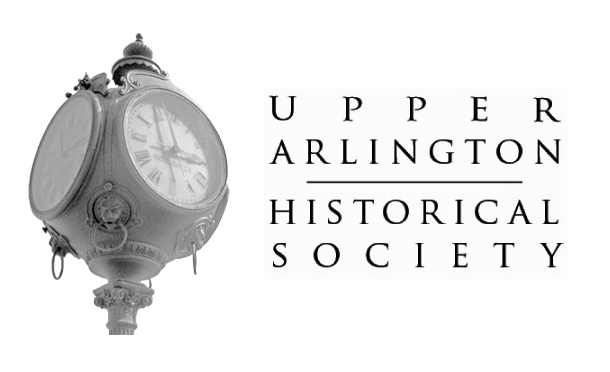Section 1.
What We Know About Historical Restrictions on Property Ownership in UA
Although today it is illegal to prohibit those of a certain race, ethnicity or religion from owning property, in the early and mid-20th century many communities here in central Ohio and across the U.S. regrettably had such restrictions in place. For properties in Upper Arlington, what methods were used and how widespread were the limitations? Our research shines a light on these practices to clarify critical details and further our community’s conversation.
did property deeds in Upper Arlington restrict people from purchasing lots / homes based on race, ethnicity and/or religion?
Some property deeds restricted Blacks from purchasing property. It remains unknown if ethnicities, religions or other races were affected.
A sample Abstract of Title from our archival collection including all deeds recorded for one parcel of property. Racial restrictions, if present, are only one paragraph within the entire chain of title.
When present, the restriction was written into a single property deed in the parcel’s title history. Upper Arlington has over 14,800 lots, so for our research, we gathered a sufficient number of examples of those with restrictions and those without to establish an overall trend.
what form did the property deed restrictions take here in Upper Arlington?
There were two methods used in Upper Arlington property deeds to prevent people from owning certain properties:
(a) A racially-restrictive clause inserted into a number of deeds between September 1926 and May 1948. A U.S. Supreme Court ruling in 1948 declared the clause to be unenforceable, thereby ending the viability of this practice.
(b) A deed requirement present in a small section of Upper Arlington for the prospective buyer to be accepted into a homeowners’ association, the Northwest Arlington Association. This organization formed in July 1948 and dissolved in 1971 as a result of a Franklin County court ruling.
It is important to note that these restrictions never applied to all homes in Upper Arlington. There was no “blanket” restriction imposed on all parcels of land. In fact, from our City’s very beginnings in 1914, homes/lots without such restrictions have always existed.
Therefore, from a deed perspective, people of any race, ethnicity or religion could have always purchased a property in Upper Arlington without such restrictions, and by the 1950s, a majority of the community’s properties would have been available to all. What about my property deed?
who specifically was prevented from purchasing property?
For the racially-restrictive clauses, the commonly used phrase of the time was not allowing persons “in whole or in part of the Negro race or blood” to own the property.(1)
Our research cannot find any evidence of additional widespread restrictions on any other race, ethnicity or religion within the property deeds. However, it is difficult to know exactly who was excluded as a result of being denied membership in the Northwest Arlington Association.
did the city of Upper Arlington institute these property deed restrictions?
No. This was never a government-imposed or city-wide restriction.
how did property deed restrictions work?
See how a 1914 marketing brochure from The King Thompson Company detailed the meaning of “restricted land” (and what is noticeably absent from the written description). Courtesy of UA Archives.
Typically, the developer of the subdivision or property created deed restrictions to protect the value of their investment by noting how the property should be used. These could include rules on setbacks from the property line, types of structures allowed to be built on the property, types of animals prohibited (i.e., no livestock) and so forth. Sellers could also add deed restrictions when they transferred the property.
Once recorded into a deed, the restriction was assumed in all future transactions on the property (unless deemed unenforceable or illegal). Therefore, researching these restrictions requires a look into a property’s entire title history and perhaps restrictions on the plat (i.e., plan) for the subdivision itself.
WhAT WAS THE EFFECT OF THESE RESTRICTIONS?
Upper Arlington residents remained overwhelming Caucasian through the late 20th and early 21st centuries, as shown from this census data from the City of UA:
1970: 99.6%
1990: 97.3%
2010: 92.1%
Yet, from 1948 - 1971 only a small sub-section of deeds in Upper Arlington had a documented legal barrier to property ownership, and after 1971 no restrictions were in place.
The extent to which the restrictions in Upper Arlington’s deeds had a direct effect on the on-going lack of diversity is beyond the scope of this research. There are several external resources addressing the impacts of such restrictions, such as:
You Can’t Live Here: The Enduring Impacts of Restrictive Covenants
Racist Language is Still Woven into Home Deeds Across America.
Today, several collaborative community efforts are guiding Upper Arlington towards a more diverse future.
References:
(1) Franklin County Recorder online database. Henry Miller, Edward D. Howard and King Thompson, Executors of the Last Will and Testament of James T. Miller to Lorraine R. Horner, 1926 Sep 28, DB Vol 825, P 561. recorder.franklincountyohio.gov
For more context:
On March 4, 2020, the Upper Arlington Historical Society welcomed author Richard Rothstein to discuss the themes from his book The Color of Law.
Summary - Racial segregation characterizes every metropolitan area in the U.S. and bears responsibility for our most serious social and economic problems – it corrupts our criminal justice system, exacerbates economic inequality, and produces large academic gaps between white and African American schoolchildren.
We’ve taken no serious steps to desegregate neighborhoods, however, because we are hobbled by a national myth that residential segregation is de facto—the result of private discrimination or personal choices that do not violate constitutional rights.
The Color of Law demonstrates, however, that residential segregation was created by racially explicit and unconstitutional government policy in the mid-twentieth century that openly subsidized whites-only suburbanization in which African Americans were prohibited from participating. Only after learning the history of this policy can we be prepared to undertake the national conversation necessary to remedy our unconstitutional racial landscape.


